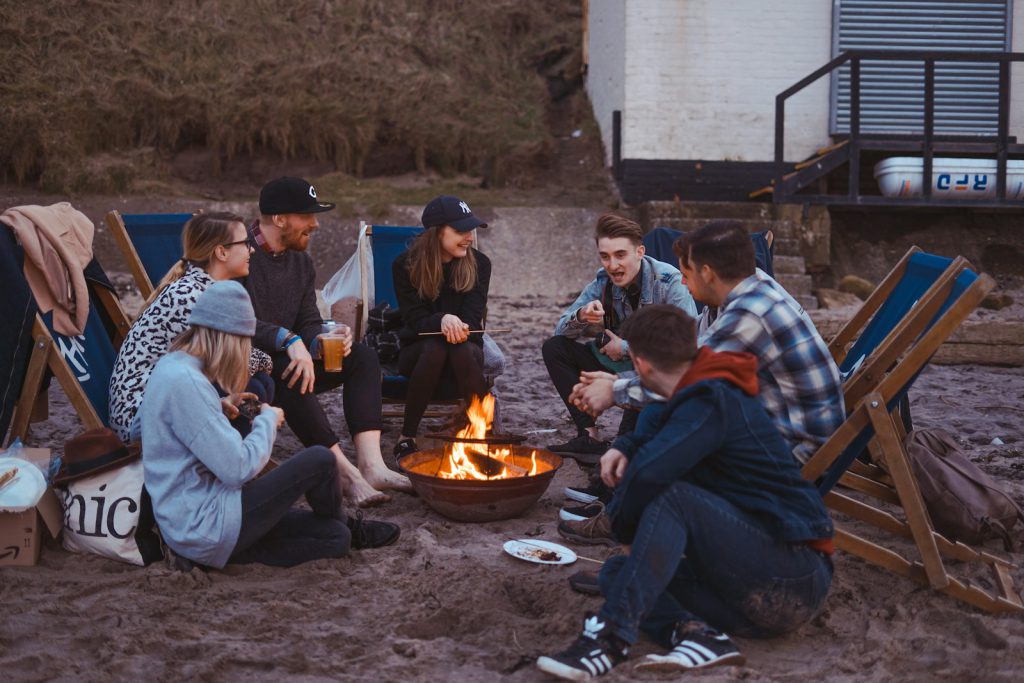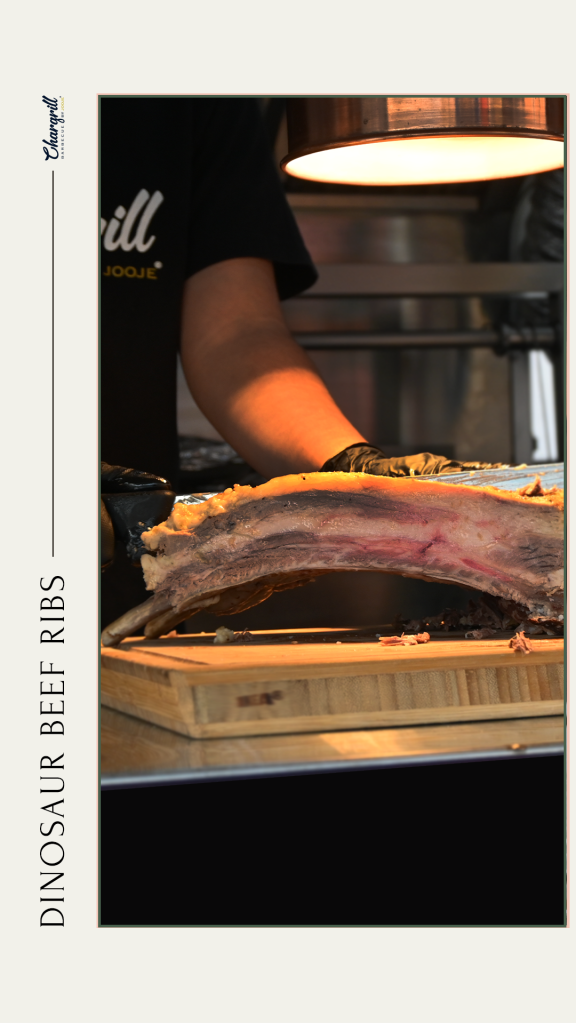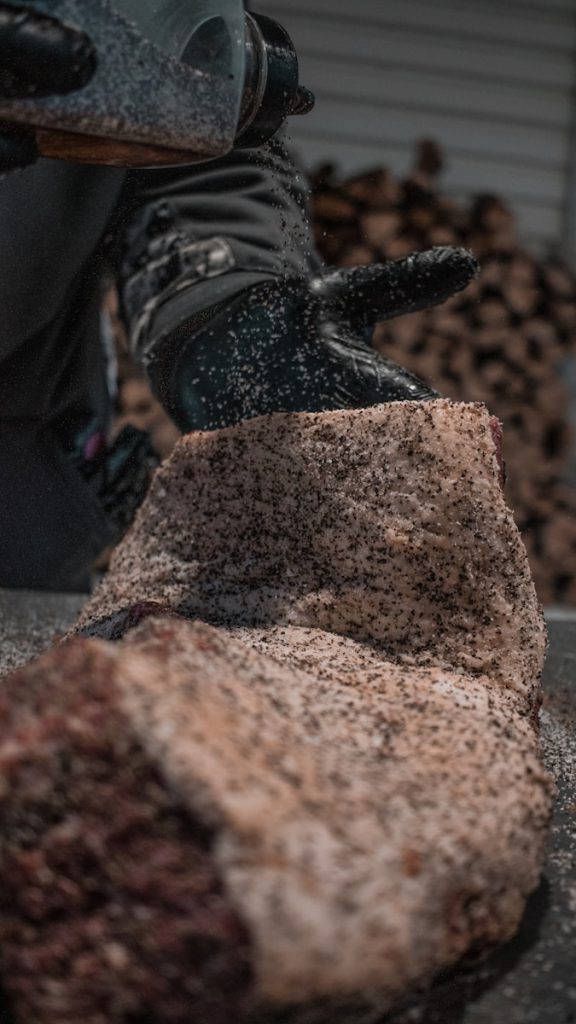Large on-site BBQ events are quintessential gatherings that blend delicious food with outdoor festivities, often catering to large crowds. These events are cherished for their casual atmosphere and the opportunity to enjoy freshly grilled meals in a communal setting. They range from corporate bbq gatherings and community fundraisers to private celebrations like weddings and family reunions. As the scale of these events increases, so do the challenges in planning and execution.
What is considered as Large On-Site BBQ Event?
A large on-site BBQ event typically refers to gatherings that involve a significant number of attendees and require extensive planning and coordination. While the exact definition can vary depending on context and region, several factors generally characterize such events:
- Attendance Size: Large on-site BBQ events often cater to a minimum of 100 attendees, but can range into the thousands, depending on the scale and purpose of the event.
- Venue Requirements: These events require spacious outdoor venues or indoor spaces with adequate facilities to accommodate BBQ stations, seating arrangements, and guest circulation.
- Planning Complexity: Organizing a large on-site BBQ event involves detailed logistics, including menu planning, equipment rental, staffing, permits, and coordinating with vendors and suppliers.
- Duration: Events typically span several hours, often involving multiple activities or phases such as appetizers, main courses, and desserts, along with entertainment and recreational activities.
- Community or Corporate Impact: They often serve as community gatherings, corporate outings, fundraisers, weddings, or large-scale celebrations, contributing to community engagement or corporate branding efforts.
- Guest Experience: These events prioritize guest experience through quality food, entertainment, and amenities, aiming to create a memorable and enjoyable atmosphere for attendees.

In essence, a large on-site BBQ event is characterized by its scale, organizational complexity, and its significance in terms of community or corporate impact, offering a communal dining experience centered around BBQ cuisine.
This table provides a snapshot of fictional large BBQ events across different cities in Australia, showcasing their locations and brief descriptions of what each event offers to attendees.
| Event Name | Location | Description |
|---|---|---|
| Outback BBQ Festival | Alice Springs, NT | Annual festival celebrating outback cuisine with BBQ competitions, live music, and local vendors. |
| Sydney BBQ Showdown | Sydney, NSW | Competitive BBQ event showcasing top BBQ teams from Australia and around the world. |
| Melbourne BBQ Extravaganza | Melbourne, VIC | Family-friendly BBQ festival featuring cooking demonstrations, food stalls, and entertainment. |
| Brisbane BBQ Bash | Brisbane, QLD | Community BBQ event with local BBQ enthusiasts showcasing their grilling skills. |
| Perth BBQ Fest | Perth, WA | Weekend-long festival highlighting BBQ culture with food tastings, workshops, and live entertainment. |
| Adelaide BBQ Challenge | Adelaide, SA | BBQ competition where teams vie for the title of Adelaide’s best BBQ master. |
| Gold Coast BBQ Fiesta | Gold Coast, QLD | Beachside BBQ event featuring celebrity chefs, beach games, and BBQ cooking classes. |
| Darwin BBQ Carnival | Darwin, NT | Carnival-style BBQ event with rides, games, and a wide range of BBQ food stalls. |
| Canberra BBQ Showcase | Canberra, ACT | Showcase of BBQ techniques and flavors from around Australia, accompanied by local craft beer tastings. |
| Meatstock | QLD, NSW | BBQ and music festival featuring competitions, demonstrations, live bands, and craft beer. |
Planning Considerations for large bbq events
Organizing a successful large on-site BBQ event begins with meticulous planning. This involves several crucial stages, starting from defining the event’s purpose and audience to setting a realistic budget and timeline. Key considerations include securing necessary permits, booking the venue well in advance, and coordinating with suppliers for food, beverages, and equipment. A detailed checklist is indispensable for tracking tasks and deadlines, ensuring nothing falls through the cracks during the hectic preparation phase.
Example Checklist for Planning a Large On-Site BBQ Event:
| Task | Deadline | Responsible Party |
|---|---|---|
| Define event objectives | 12 months prior | Event organizer |
| Secure venue booking | 10 months prior | Event coordinator |
| Obtain permits | 8 months prior | Permits manager |
| Finalize catering menu | 6 months prior | Chef |
| Arrange entertainment | 4 months prior | Entertainment team |
| Confirm RSVPs | 2 months prior | RSVP manager |
| Conduct final site visit | 1 month prior | Venue coordinator |
| Set up event timeline | 3 weeks prior | Event manager |
| Review health & safety plan | 1 week prior | Safety officer |
| Execute event | Event date | All staff |
Venue Selection and Setup
Selecting the right venue is pivotal to the event’s success. Factors such as capacity, accessibility, and amenities like parking and restroom facilities play crucial roles. For large-scale BBQ events, outdoor venues with ample space for BBQ stations, seating arrangements, and guest circulation are preferred. Setting up involves strategically placing BBQ stations, buffet tables, seating areas, and entertainment zones to optimize flow and guest experience.
Table: Venue Selection Criteria
| Criteria | Importance | Example Options |
|---|---|---|
| Capacity | High | Local parks, event spaces |
| Accessibility | High | Accessible parking and entrances |
| Amenities | Medium | Restrooms, shaded areas |
| Outdoor Space | High | Gardens, open fields |
| Location | Medium | Proximity to city center |
| Noise Restrictions | Low | Areas with noise ordinances |
Menu Planning
Crafting a diverse and enticing BBQ menu is essential to cater to varying tastes and dietary preferences. The menu should feature a mix of grilled meats, seafood, vegetarian options, and sides like salads, grilled vegetables, and condiments. Incorporating local flavors and seasonal ingredients adds a unique touch. Providing clear signage and labeling for allergens and dietary restrictions helps guests make informed choices. A well-planned menu enhances guest satisfaction and ensures everyone finds something to enjoy.
List: Sample BBQ Menu
- Main Dishes: BBQ ribs, grilled chicken skewers, 12 hours smoked brisket
- Seafood: Grilled shrimp, cedar-plank salmon
- Vegetarian: Portobello mushroom burgers, grilled vegetable skewers
- Sides: Coleslaw, potato salad, cornbread
- Desserts: Grilled fruit skewers, peach cobbler

Equipment and Supplies
Ensuring the availability of adequate equipment and supplies is critical for smooth operations. Essential BBQ equipment includes grills, smokers, cooking utensils, and fuel sources. Additionally, tables, chairs, serving platters, and utensils are necessary for serving and dining. Quantifying supplies such as food, beverages, napkins, and disposable dinnerware prevents shortages and wastage. A contingency plan for equipment malfunction or shortages minimizes disruptions during the event.
Table: Essential BBQ Equipment Checklist
| Equipment | Quantity Needed | Notes |
|---|---|---|
| Grills | 3 large, 5 medium | Include propane tanks |
| Smokers | 2 | Ensure adequate wood chips |
| Cooking Utensils | Set for 20 staff | Tongs, spatulas, basting brushes |
| Tables & Chairs | 20 tables, 100 chairs | Consider seating arrangements |
| Serving Platters | Assorted sizes | For buffet and BBQ stations |
| Utensils | 500 sets | Forks, knives, spoons |
Staffing and Roles
Effective staffing is pivotal in executing a large on-site BBQ event seamlessly. Roles may include chefs and cooks for food preparation, servers for guest assistance, bartenders for beverage service, and event coordinators for overseeing operations. Clear delegation of responsibilities and adequate training ensure staff members perform their roles efficiently. Establishing communication channels and a chain of command facilitates coordination and problem-solving during the event.
List: Event Staff Roles and Responsibilities
- Event Coordinator: Oversees overall event logistics and coordination.
- Chef: Leads food preparation and ensures quality standards.
- Servers: Assist guests with food service and beverage refills.
- Bartenders: Prepare and serve drinks, maintain bar cleanliness.
- Safety Officer: Monitors health and safety compliance throughout the event.
Health and Safety Measures
Maintaining high standards of health and safety is non-negotiable at large on-site BBQ events. This entails adhering to food safety protocols, ensuring proper hygiene practices among staff, and monitoring cooking temperatures to prevent foodborne illnesses. Fire safety measures, including fire extinguishers and safe grilling practices, mitigate fire hazards. Crowd management strategies, such as designated walkways and emergency exits, promote guest safety amidst large gatherings.
List: Health and Safety Guidelines
- Food Safety: Regular temperature checks, proper storage of perishables.
- Hygiene Practices: Handwashing stations, disposable gloves for food handling.
- Fire Safety: Clear fire extinguisher locations, no open flames near combustibles.
- Crowd Management: Marked emergency exits, crowd control barriers.
How to cater for large events and Large Groups?
Catering for large groups can be both exciting and challenging. Whether it’s a corporate event, a wedding, or a large family gathering, successful catering requires careful planning and creativity. In this section, we’ll provide you with tips and strategies to make your large group catering a success. Let’s dive in!
Catering Checklist for Large Groups
Planning a large catering event can be overwhelming. To help streamline the process, here is a comprehensive checklist:
Pre-Event Planning
- Define the Event
- Date and time
- Venue and location
- Number of guests
- Event type (corporate, wedding, party)
- Menu Planning
- Determine dietary restrictions
- Choose appetizers, main courses, sides, desserts, and beverages
- Plan for special dietary needs (vegan, gluten-free, etc.)
- Budgeting
- Calculate overall budget
- Allocate funds for food, staff, equipment, and venue
- Plan for unexpected expenses
- Staffing
- Determine the number of staff needed (chefs, servers, bartenders)
- Schedule staff shifts
- Brief staff on event details and expectations
Event Day Preparation
- Food Preparation
- Confirm delivery times for ingredients
- Prepare food in advance where possible
- Ensure all food is cooked and stored at the correct temperatures
- Setup
- Arrange tables, chairs, and decorations
- Set up food stations and serving areas
- Ensure all equipment is working (ovens, refrigerators, warmers)
- Final Checks
- Confirm guest count and any last-minute changes
- Ensure all dietary requirements are met
- Double-check the setup and cleanliness of the venue
Use Templates for large group catering
Templates can help in organizing and planning. Here are some useful templates:
Budget Template
| Item | Estimated Cost | Actual Cost | Notes |
|---|---|---|---|
| Venue | $500 | $450 | Discount applied |
| Food | $2000 | $2100 | Added extra desserts |
| Beverages | $300 | $250 | |
| Staff | $600 | $600 | |
| Decorations | $200 | $180 | |
| Miscellaneous Expenses | $150 | $200 | Unexpected repairs |
| Total | $3750 | $3780 |
Menu Planning Template
| Course | Dish | Ingredients Needed | Special Notes |
|---|---|---|---|
| Appetizers | Bento Boxes | Rice, fish, vegetables | Prepare 50 units |
| Main Course | Grilled Fajitas | Chicken, peppers, tortillas | Marinate chicken overnight |
| Side Dish | Chipotle Mashed Potatoes | Red potatoes, chipotle peppers, scallions | Prepare 100 servings |
| Dessert | Berry Pavlova | Berries, meringue, cream | Make day before |
| Beverages | Non-alcoholic punch, water, soft drinks | Various | Ensure sufficient ice availability |
Risks and Mitigation Strategies
Catering large events comes with its own set of risks. Here’s how to mitigate them:
Common Risks
- Food Safety
- Ensure proper storage and cooking temperatures
- Train staff on hygiene practices
- Use insulated containers for transporting food
- Guest Satisfaction
- Accurately identify dietary restrictions and preferences
- Provide a variety of food options
- Ensure prompt and courteous service
- Logistical Issues
- Confirm all delivery times in advance
- Have backup plans for equipment failure
- Allocate additional time for setup and preparation
Mitigation Strategies
- Risk Management Plan
| Risk | Likelihood | Impact | Mitigation Strategy |
|---|---|---|---|
| Food spoilage | Medium | High | Use proper storage, keep backups, frequent checks |
| Staff shortages | Medium | Medium | Hire extra staff, have on-call backups |
| Equipment failure | Low | High | Have spare equipment, maintain regular service |
| Miscommunication | Medium | Medium | Regular briefings, use checklists, confirm details |
Tips and Tricks
Here are some practical tips and tricks to help ensure your event goes smoothly:
General Tips
- Plan Ahead: Start planning well in advance to avoid last-minute stress.
- Stay Organized: Use checklists and templates to keep track of tasks.
- Communicate Clearly: Ensure clear communication with clients, staff, and vendors.
Food Preparation
- Prep in Advance: Prepare as much food as possible before the event day.
- Batch Cooking: Cook in large batches to save time and ensure consistency.
- Quality Ingredients: Use fresh, high-quality ingredients for the best results.
Service
- Staff Training: Ensure staff are well-trained and briefed on their roles.
- Efficient Setup: Arrange the venue for optimal flow and accessibility.
- Guest Interaction: Encourage staff to be friendly and attentive to guests.
Efficient Serving Methods
Efficient serving methods are crucial for catering large groups. Consider buffet-style setups and food stations to streamline the serving process and minimize wait times.
Buffet Style
Buffet-style meals are popular for large events. They are cost-effective, easy to manage, and offer a wide variety of food choices. Arrange the buffet in a logical flow, starting with appetizers and ending with desserts.
Food Stations
Food stations allow for a more personalized dining experience. Each station can offer a different type of cuisine or dish, such as a taco station, pasta station, or dessert station. This setup encourages guests to explore different options and reduces congestion at the serving tables.
Plated Meals
For more formal events, consider plated meals. Although more labor-intensive, plated meals offer a refined dining experience. Ensure you have enough staff to serve and clear plates efficiently.
Sustainability Practices
Sustainability is increasingly important in event planning. Implementing eco-friendly practices in your catering can make a positive impact on the environment.
Eco-Friendly Ingredients
Choose locally sourced and organic ingredients whenever possible. This reduces the carbon footprint associated with transportation and supports local farmers. Incorporate seasonal produce to ensure freshness and reduce costs.
Waste Reduction
Implement strategies to reduce food waste. Plan portions carefully, use leftovers creatively, and compost food scraps. Partner with local organizations to donate any surplus food.
Sustainable Tableware
Use sustainable tableware such as biodegradable plates, cups, and utensils. Avoid single-use plastics and opt for reusable or compostable alternatives. This reduces the environmental impact of your event.
Creative Presentation
Presentation is key to making your catering memorable. Use creative and visually appealing setups to enhance the dining experience. Incorporate themed decorations that match the event’s theme. Use tablecloths, centerpieces, and signage to create a cohesive look. Consider using flowers, candles, or fairy lights to add a touch of elegance.
Interactive food displays engage guests and add an element of fun to the event. Consider options like a build-your-own dessert bar or a live cooking station. This not only entertains guests but also allows them to customize their meals. Ensure that each dish is visually appealing. Use colorful ingredients and creative plating techniques to make the food look as good as it tastes. Simple touches like garnishes and edible flowers can elevate the presentation.
Conclusion
By following these comprehensive checklists, templates, and strategies, you can ensure that your large catering events are well-organized, cost-effective, and highly successful. Catering for large groups requires careful planning, creativity, and attention to detail. By following these tips and strategies, you can ensure a successful and memorable event. From understanding your guests’ needs and creating a diverse menu to implementing budget-friendly and sustainable practices, every aspect of your catering can be optimized for success.



